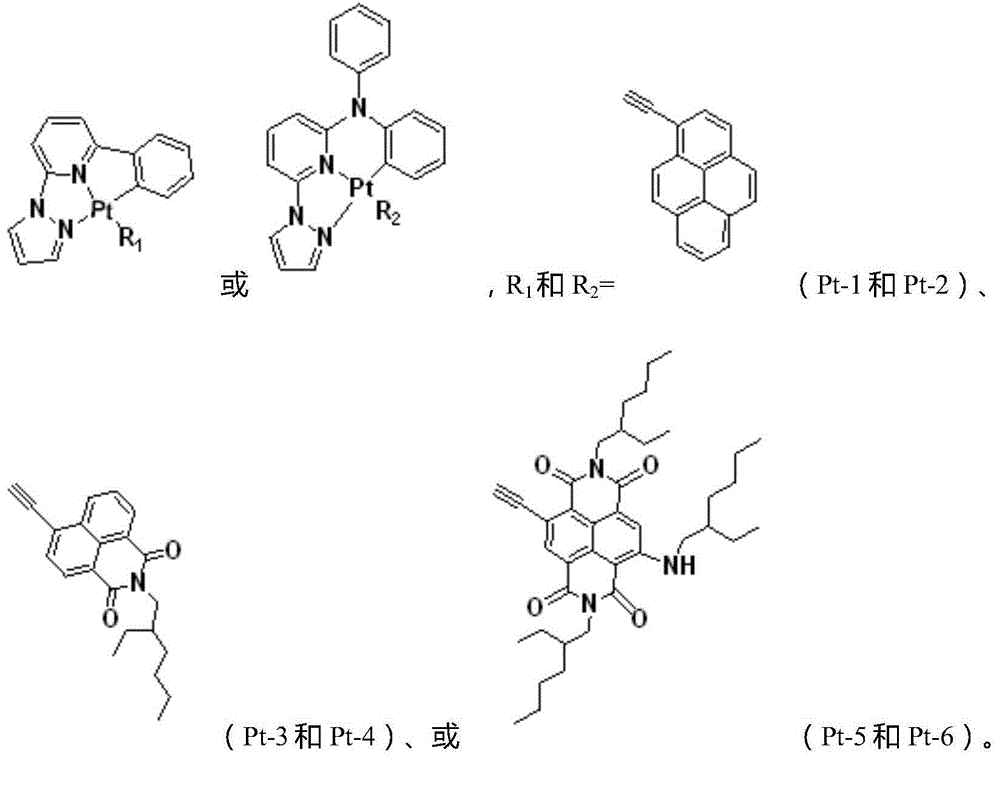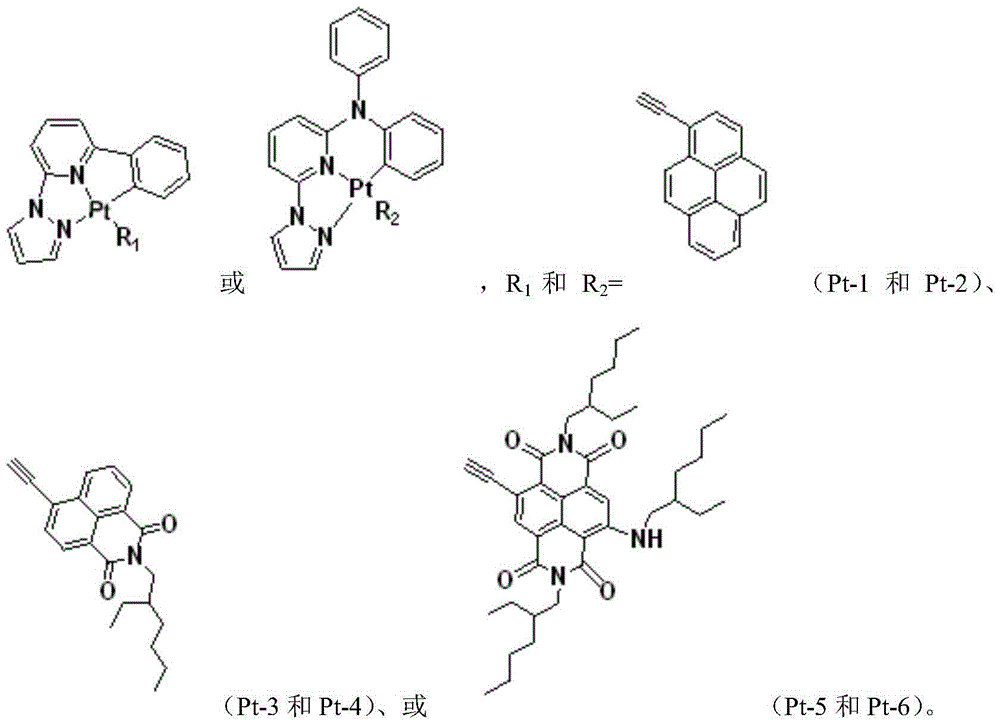Preparation method of up-conversion luminescent material based on triplet-triplet annihilation
A technology of triplet annihilation and luminescent materials, which is applied in the field of preparation of up-conversion luminescent materials, can solve the problems of restricting the application effect of semiconductor materials, wide band gap, photosensitizer degradation of water pollution, etc., and achieve enhanced sunlight utilization rate and strong absorption , the effect of improving efficiency
- Summary
- Abstract
- Description
- Claims
- Application Information
AI Technical Summary
Problems solved by technology
Method used
Image
Examples
Embodiment 1
[0037] 1. Preparation of triplet photosensitizer Pt-1
[0038] Add m-1 (90mg, 0.20mmol) to 10mL of dichloromethane, add R-1 (30mg, 0.26mmol), CuI (7.0mg, 0.036mmol) and i-Pr under nitrogen protection 2 NH (1 mL). The mixture was stirred at room temperature for 24 hours, and the crude product was purified by column chromatography (developing solvent: dichloromethane) to obtain 69.0 mg of a yellow solid with a yield of 53.2%. MALDI-HRMS:calcd([C 32 h 20 N 3 Pt+H] + )m / z=641.1305, found m / z=641.1343.
[0039] 2. Preparation of upconversion materials using triplet photosensitizer Pt-1 and energy acceptor 9,10 diphenylanthracene (DPA)
[0040] 2g of polymethyl methacrylate (PMMA) was dissolved in N'N-dimethylformamide (DMF), and 0.1 mmol of triplet photosensitizer Pt-1 and 19 mmol of DPA were added to the mixed solution and stirred to a homogeneous solution. Pour the solution with photosensitizer and annihilation agent DPA into a glass mold, put the mold into a vacuum oven f...
Embodiment 2
[0043] Embodiment 2. Utilize the Pt-1 up-conversion device prepared in embodiment 1 and TiO 2 Degradation of methyl orange
[0044] Using a 35W xenon lamp as the light source, the prepared up-conversion material is placed between the light source and the photocatalytic reaction container. At this time, the visible light emitted by the xenon lamp passes through the up-conversion material to convert the visible light into ultraviolet light and excite TiO 2 degrades methyl orange. TiO 2 Add to the methyl orange solution containing 250mL, the initial concentration of grade A orange is 20mg / L. The light source is a 35W xenon lamp. After 5 hours of light reaction, the decolorization rate of methyl orange reaches 100%, and the methyl orange is completely degraded.
Embodiment 3
[0045] Embodiment 3. Pt-2 up-conversion device and TiO prepared according to the method of embodiment 1 2 Degradation of methyl orange
[0046] Using a 35W xenon lamp as the light source, the prepared up-conversion material is placed between the light source and the photocatalytic reaction container. At this time, the visible light emitted by the xenon lamp passes through the up-conversion material to convert the visible light into ultraviolet light and excite TiO 2 degrades methyl orange. TiO 2 Add to the methyl orange solution containing 250mL, the initial concentration of grade A orange is 20mg / L. The light source is a 35W xenon lamp. After 6 hours of light reaction, the decolorization rate of methyl orange reached 100%, and the methyl orange was completely degraded.
PUM
 Login to View More
Login to View More Abstract
Description
Claims
Application Information
 Login to View More
Login to View More - R&D
- Intellectual Property
- Life Sciences
- Materials
- Tech Scout
- Unparalleled Data Quality
- Higher Quality Content
- 60% Fewer Hallucinations
Browse by: Latest US Patents, China's latest patents, Technical Efficacy Thesaurus, Application Domain, Technology Topic, Popular Technical Reports.
© 2025 PatSnap. All rights reserved.Legal|Privacy policy|Modern Slavery Act Transparency Statement|Sitemap|About US| Contact US: help@patsnap.com



